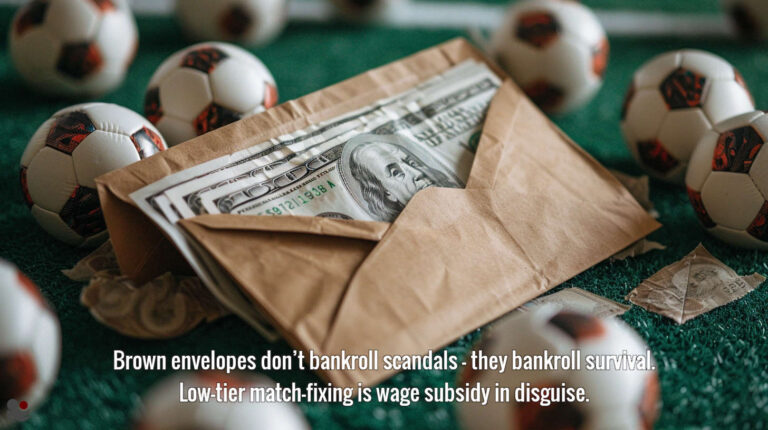
In this article we will teach you to determine how large your starting bank needs to be to avoid bankruptcy by calculating the longest losing streaks that can be expected from your chosen betting strategy.
What is Bankroll Management?
Bankroll management is one of the most important pillars for success in sports betting.
 Image: Alex Roz
Image: Alex RozA portfolio of sports bets placed over time can be compared to investing in the money markets on a portfolio of stocks and shares.
Indeed, the term ‘bankroll management’ comes from the financial sector and describes the use of the seed capital (i.e. in betting terminology, the initial stake).
Bankroll is the ‘starting bank’, and the intention is to manage it and increase it at the same time.
Bankroll management therefore deals with how to properly manage your starting bank.
The Continual Importance of Statistics, and Lots of Them!
The good news: It is actually possible to calculate the required starting bank mathematically.
The bad news: The calculations are naturally dependent upon statistics, and the ‘significance’ of the results relies on the amount of data used.
For example, any strategy based on one German Bundesliga team’s home games during a season produces a sample of precisely 17 sets of data, which is a very small number, statistically speaking.
The Law of Large Numbers is omnipresent so far as statistical accuracy is concerned: The larger the data sample, the more accurate the final results are likely to be, although a line has to be drawn between sample size and an acceptable level of error.
One way of coping with small data sets is to incorporate a risk discount into the equation. More about this later…
What does ‘Optimal’ Really Mean?
On face value, you might assume that calculating the necessary starting bank for a betting strategy can be derived solely from the stake multiplied by the number of bets (n).
With the 17 matches from our example above, and a constant stake of 100 units per bet, the bank would then be: 100 x 17 = 1700 units. But is this maximal amount really needed?
Although this may be true where returns from winning bets cannot be immediately re-invested, such a bank can never be optimal because an inordinate amount of capital would be tied-up.
What you should look for is the most cost-effective bankroll where all the money you have at your disposal is working for you as efficiently as possible.
Optimal bankroll is characterized by two things:
- Cash holdings (i.e. money in reserve) is kept as low as possible
- Gambler’s ruin is avoided
Calculating the Optimal Bankroll
There are five vital criteria you will need to establish:
- What is the size of your stake per bet?
- How many bets does your strategy expect to be placed?
- What is the expected hit rate of your strategy?
- What is its expected longest losing streak?
- Determine the risk variables and incorporate a ‘risk coefficient’.
Example Calculation
Okay, we will stick with the German Bundesliga for demonstration purposes and use a system gleaned from its latest full-time 1×2 HDAFU Simulation Table.
If you have already bought this table, you can see the full and detailed analysis of backing the underdog whenever Hamburg plays at home: This strategy has realised a yield in excess of 58% over the course of five complete seasons from 2010-11 to 2014-15.
In addition, there has been profit produced in every one of those same five seasons.
It’s an ideal candidate for incorporating into a large portfolio of other systems. (When we say ‘large’ we mean a portfolio that will generate at least 500 bets in a season.)
Remember the five criteria:
(1) Size of Stake per Bet:
This is determined by your own liquidity, and to keep this calculation simple, a Constant Stake (CS) of 100 units per bet will be used.
(2) Number of Bets:
For this mini portfolio of Hamburg home games, the Number of Bets (n) is 17 for the new season.
(3) Hit Rate:
The HDAFU Simulation Table reveals that from 85 Hamburg home games over five seasons, 32 underdogs triumphed: a Hit Rate of 38%.
The random selection of only 85 matches is a relatively small sample and the possibility of ‘random sample error’ is therefore relatively large.
To compensate, it is worth applying what is known as a ‘risk discount’ to reduce the actual hit rate experienced and to build-in an extra level of security if statistical expectations for the new season are not realised.
Taking a risk discount figure of 5%, the expected hit rate becomes: 38% – 5% = 33%.
[Have a look at this article for more information about hit rates].
(4) Longest Losing Streak Expected (LLSe):
The longest expected losing streak (or winning streak) can be calculated using the following formula:
n = number of trials (i.e. total number of bets)
ln = natural logarithm*
P = (negative) probability†
| .. | = absolute value or ‘modulus’ (see Wikipedia if you would like to know more about these mathematical symbols)
*Suffice to say, explaining what natural logarithm is would be worthy of a series of articles. For the time being, use Excel to calculate this for you: to make life easy, the formulas to use are included in the free spreadsheet download below.
†For this calculation, the negative probability or hit rate is used. In this case, having adjusted our hit rate down to 33% using a risk discount, the probability that the bet loses (negative probability) is 67%.
rounded down to 7.00
From a pool of 17 bets, you can therefore statistically expect that a maximum of seven in a row may be lost without winning one in between.
(5) Risk Coefficient (RC):
The determination of risk variables depends primarily on your risk aversion. Risk-averse bettors choose a high coefficient figure (e.g. 5), whilst gamblers who are happier taking risks choose lower coefficients (e.g. 2).
But why are we including a risk coefficient at all?
We can assume that the longest expected losing streak (in our example, seven lost bets in a row), may already start with the first bet.
Although one bet may win after that, with the gains reimbursing the loss and allowing for reinvestment, there can still be a second stroke of bad luck directly after the first bet that you have won.
Neither winning bets nor losing bets ever line up in a uniform manner; they will always appear in a random pattern, so always better to be safe than sorry.
Optimal Bankroll Formula
The formula is:
Our Bundesliga example is an underdog backing system, which by its very nature, is risky. However, as there are only a maximum of 17 bets in this mini system, we will choose a risk coefficient of 1.5: we are happy to take the risks!
It is not very likely that there will be two losing streaks of seven games in a row when betting 17 consecutive times. However, we are aware that it may be quite challenging for the nerves to sit through losing streaks watching the bank balance reduce before your eyes!
The optimal bankroll required to run this system for a season is as follows:
If you remember the sub-optimal bank strategy at the beginning of the article where we touched on a bankroll of 1,700 units (100 units per bet x 17), you can see we have now released 650 units for investing in another strategy elsewhere.
Calculate Your Own Longest Expected Losing Streaks & Optimal Bankroll!
With this free Excel table download, you can easily and quickly discover what the longest losing streaks are for your own strategies. Just enter your stake, number of bets, and risk coefficient figures and let it calculate everything for you!
>>> Excel Workbook – Losing Streaks <<<
Click on the above button – in the new tab click on the ‘Continue Checkout’ button. Enter your name and email address to allow our automatic shopping cart to deliver the file by email to you, free of charge. The .xls file size is 93 KB. When you receive your confirmation email, just click on ‘View Purchase Online’ (in the email text) to download the file.








Hi Soccerwidow,
I compiled my portfolio for the Winter Leagues.
Bets / Hit Rate / Yield / LLSe
59 38,98% 28,40% 8
65 54,13% 14,59% 5
124 36,13% 16,25% 11
43 83,57% 8,33% 2
102 48,73% 15,12% 7
145 37,19% 17,47% 11
62 32,69% 15,36% 10
24 71,90% 19,42% 3
69 76,23% 11,45% 3
102 32,68% 18,30% 12
86 51,16% 14,87% 6
37 81,62% 11,38% 2
_______________________
918 47,95% 16,17%
Now I’m wondering what my stake size should be. I have 3000 units as starting bank. I was thinking about 30 units per bet, so 1% per bet and giving your “Stake Ratchet & Stop-loss Mechanisms” from the 2016-17 Winter League Campaign a try. Not really sure how to calculate the perfect stake size for a whole portfolio, because of the high number of bets each week.
What do you think about this?
Thank you in advance and greetings
Lukas
Hi Lukas,
I’m in the process of finishing an article with the performance of our portfolio for the WL 2017-18 and there is a chapter about ratcheting and bank size included.
To answer you very short… you have 918 bets expected over the period of approx. 47-48 weeks and you may have probably up to 40-50 bets in any round (week), sometimes less, and probably occasionally even none.
By limiting the number of the bookmakers you use to 5 you will have in each of them a starting bank of 600. So if you stake 1.5% of your bank per bet that makes 45 units each and allows you to place up to 13 bets with each bookmaker/ exchange.
Have a look at this direction of thinking… How many bets per bookie/exchange are you going to expect in each round?
What you want is to avoid to have to juggle too much between bookies/exchanges. Try to keep it simple.
If in the end you are staking 1.3% of your (total) bank it’s fine. But I wouldn’t do more than 1.5% as otherwise you may find it hard to place all bets at the same time if there are too many in one single period.